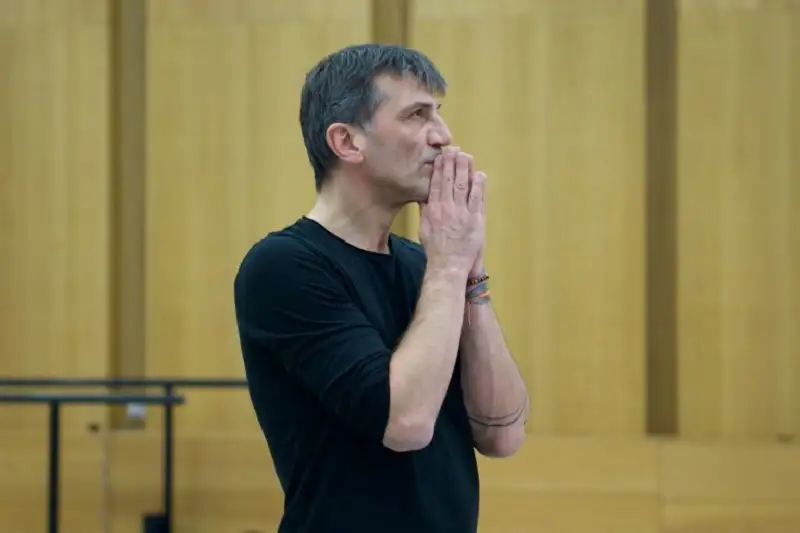Ballet dedicated to Beethoven’s anniversary created at Astana Opera

The world premiere of the ballet Beethoven – Immortality – Love staged by the famous German choreographer Raimondo Rebeck will be held on February 14 and 15 with the support of the Ministry of Culture and Sports of the Republic of Kazakhstan. The Artistic Director of the Astana Opera Ballet Company is Altynai Asylmuratova, Music Director and Conductor is Abzal Mukhitdin, and the Chief Choirmaster is Yerzhan Dautov, Astana Opera’s official website reads.
The choreographer is filled with admiration for the life and work of the brilliant composer. Beethoven was the first classical musician who enticed Raimondo Rebeck into the infinitely beautiful world of art, when the ballet master was just a child.
– What in this ballet will help the audience understand the distant era in which Beethoven lived and worked?
– His life was at the same time complex and grand-scale: he created more than 600 pieces of music. Choosing the right moments from his biography that are interesting to the general public is difficult enough. Therefore, I decided to start with his family, to show the training, the education that Beethoven received as a child. The audience will also be able to see the already established personality of the composer, his mixing with Viennese beau monde. I think that the scene of the Viennese ball will help to reveal this side of him. It will show Beethoven’s connection with the nobility, the high society. As an artist, I was also interested in the topic of his illness – deafness, which, in principle, could not go together with the profession of a composer. For me, this is like a blind choreographer. So, we will see one of the characters in the ballet – Deafness, inextricably linked with two other characters: Love and Euterpe – Inspiration. We will finish the ballet with Symphony No. 9, which carries the meaning of the universal nature of his music. It is important to note that Beethoven began his career as a pianist, and only later became famous as a composer. Thus, there will be black and white scenery, like a piano keyboard. Incidentally, this aesthetic will be repeated in the characters’ costumes, only Love will have a red outfit. These colours seem timeless, eternal, ageless to me. I wish for the people to say that this ballet is relevant when they watch it 10 years from now. Straight lines are the most eternal, unsusceptible to the passage of time, they save from pretentiousness around. The production should be universal for everyone. Like Beethoven’s music was universal, ageless and unsusceptible to time.

– You have abstract entities as the characters in your ballet, how do they get physical manifestation?
– I like to engage the audience’s imagination, to make the viewers think. For example, a person can seem very frail, and the illness itself may look something like that. From such associations characters of my ballets are born.
– What made up the musical basis of this ballet?
– This was the most difficult part of the job: it took months and months to find the music. I wanted to end the ballet with Symphony No. 9, which, as you know, which includes the choir and soloists singing, but wanted for the choir to appear onstage not only at the end of the evening. I was looking for a piece for them, and I found the Missa Solemnis. Even Beethoven himself said that it was one of his best works, and this is what would be featured at the beginning of the performance. I love piano music, especially the Piano Sonata No. 5, which gives an opportunity to express emotions. It is particularly suitable for a love duet. There is also the celebrated Moonlight Sonata. However, not only Beethoven’s music was included in this ballet. At Beethoven’s time, Mozart was already very famous. In Viennese society, listening to his music was very fashionable. Today this can be compared to going to a club where all the latest hits are performed. In the Viennese Ball scene, we also have Mozart and Haydn’s music, as Haydn was one of Beethoven’s teachers. He had a great influence on him as a composer. To show the illness and deafness, German composer Dirk Haubrich created new works especially for this ballet, arrangements, which will not be performed by the orchestra, but a recording will be played instead.
– What is the choreography of this ballet like? Is it difficult for the dancers to perform?
– The first rule that I use in my work is the aesthetics and the story. The dancers’ movements must create an atmosphere that helps to understand the meaning of this ballet, their task is to show emotions, convey feelings, and show their acting abilities in duets. Since this is my second experience with the Astana Opera Ballet Company, everything happens much faster, because the dancers understand me and my requirements. The production is very large-scale; I hope we will be successful. As for the choreography, I mainly use modern choreography with elements of classical ballet.
The performances will begin: on February 14 at 19:00, on February 15 at 17:00.